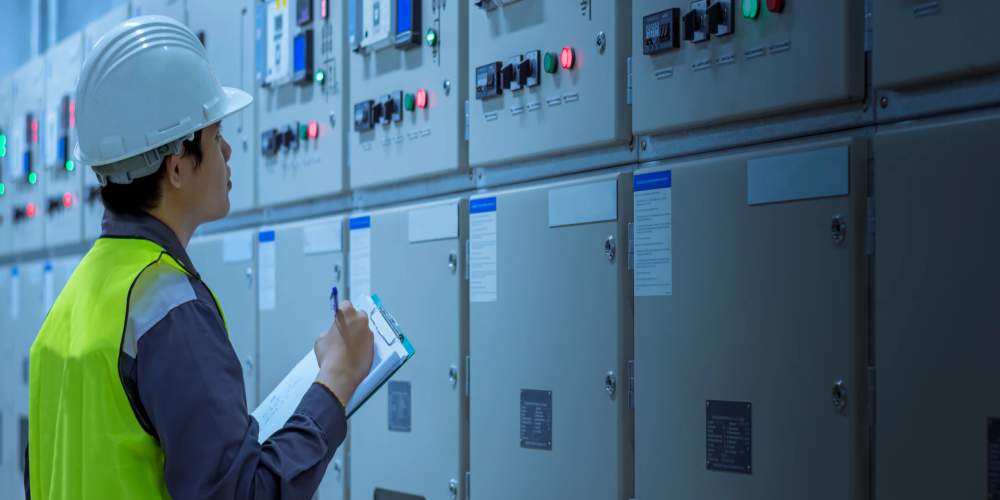
The UK plans to embrace offshore wind power to reach its climate goals by 2030. The National Grid Electricity System Operator (ESO) intends to invest billions of pounds into the effort with the Pathway to 2030 Holistic Network Design (HND) initiative to execute the Offshore Transmission Network Review (OTNR).
Where will all that money go? The UK already has some infrastructure to guide the nation through the transition, but upgrades are essential for success.
COMPARE PRICES FROM LOCAL INSTALLERS
Compare prices from local companies fast & free
Enter your postcode to compare quotes from leading professionals. We promise to keep your information Safe & Secure. Privacy Policy
What’s Part of the Plan?
The Pathway allocates £54 billion to infrastructure development. The nation must find a way to increase its energy capacity. Currently, it’s 11.3 GW, and the package’s goal is to extend that to 50 GW. It’s not enough for the UK to have as many offshore wind turbines as possible to generate that much power. There is another expense — it must have connectivity that transports and distributes that power back to communities.
Most of the budget will go to installing new wires and pylons for improved, up-to-date transmission technology and the overheads that come with it. Many lines are outdated and lose residual energy as power travels, so more efficient modern tools must take centre stage.
The OTNR effort is moot without considering UK citizens and the planet’s health. The investment will also take into account the project’s four objectives when guiding its decisions and determining its success:
- Care for the environment
- Customer cost burdens
- Local community well-being
- Reasonable deliverables
How Will This Compare to Existing Infrastructure?
Technological development could lessen the impact of the UK’s clean energy goal — e-waste and increased materials are a few byproducts of advancement that are hard on the planet. The amount of energy it wants to get is a decent number.
However, power use will only increase exponentially in the coming years, especially as AI becomes more commonplace and corporations build more energy-intensive structures like data centres. A lack of power has already dismissed some investments, although effective implementation of the HND might make these projects a reality.
Reduced transmission lines are another benefit. The UK worked with what it had, which were effective yet inefficient wiring methods. There must be intermediary systems that encourage providers to connect turbines before sweeping efforts like the HND. Old tech won’t suffice anymore, as it’s cost-prohibitive and energy inefficient.
Cables that connect wind farms to land strain seabeds, so an integrated approach is essential — which is what the plan promises. It will require numerous sectors to collaborate, from geotechnical engineers assessing the stability of building site conditions to city officials distributing permits to connect citizens and businesses to the grid.
If It Works, How Will It Impact the UK?
Altering national infrastructure is a big ask, meaning many people must have hands on the job — almost 170,000. Providing job opportunities is the most immediate way to impact UK households. These efforts directly correlate with decarbonization and citizen buy-in for clean energy adoption.
UK residents are already struggling with rising energy prices as fossil fuels get more expensive, influenced by sector struggles and international conflict. The impact of job availability and clean energy compounds into reduced financial energy burdens on citizens. The cost of living could level to a reasonable average, making people happier and more financially stable.
In just a few years, the nation’s carbon footprint will reduce by over 2 megatonnes, altering the construction industry in the country forever. Buildings are one of the world’s most prominent energy vacuums, and focusing on these significant players is critical when making meaningful strides in swift positive climate efforts.
The UK’s Plan in Action
The UK needs professionals, funding, and technology — and this ambitious plan intends to supply all three when jetting the country’s grid into a decarbonized future. Nations must make aggressive climate targets. Otherwise, the world will fall behind a curve and be unable to catch up.
The UK will be many steps closer to clean energy if it executes this plan, which will help every eco-conscious national effort moving forward.
Find a local installer
Welcome to the biggest directory of UK renewable energy companies





























